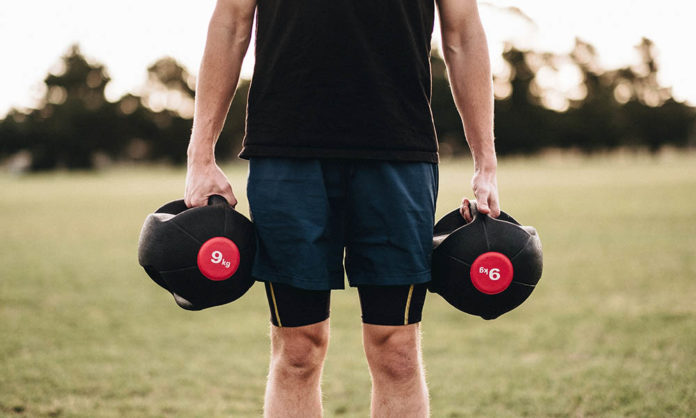As a physical therapist who teaches Pilates and Gyrotonic® exercise full time, I have learned quite a bit from observing how my clients’ bodies respond to my work.
There are a couple “golden nuggets” that I’ve acquired over the years—morsels of information that I find so practical and invaluable, I’d like to share one of them with you in this article.
One of the most common physical issues we encounter at the studio is knee pain. We see people of all ages who suffer from knee pain and knee alignment issues, from teenagers to grandparents.
You may have tried treatments such as cortisone shots, physical therapy or kinesio tape, but yet you still struggle with daily activities like going up and down stairs, getting in and out of a car, or getting up from a chair. If this is the case, you may need these three principles for maintaining healthy knees: (1) Get your hips as strong and limber as possible; (2) mind your core; (3.) supple those feet.
Hip strengthening and stretching
When it comes to a functional activity like going up stairs, most people tend to pitch forward, put a hand on their knee for support (or pull on a handrail), and hope for the best as they heave or lurch to get up a step. Here’s the newsflash: Your butt muscles are supposed to be pushing you up those stairs, not your knees. Strengthening the glutes may seem simple—lunges and squats—but not so fast. You first need to strengthen the hips in a safer position, like sidelying or on your back. At my studio, we begin with sidelying on a Pilates apparatus called the Reformer or on the Gyrotonic® Pulley Tower. We then progress to more functional positions like standing balance work on the Pilates High Chair. Our goal is to establish your muscle memory for proper movement before you attempt any standing exercises.
Mind your core
Most people hear the word core and think of crunches. I’m here to tell you that the primary function of your core is to hold you upright. So, lifted, lengthened posture. Think about your body as a split screen with a top half (from the waist up) and a bottom half (waist down). If the torso is sinking, it’s “heavier” on the pelvis. Effectively strengthening your core means you can hold your trunk lifted off your pelvis, and you won’t collapse into the lower half of your body. Pssst, this decreases pressure on your knees! Most of us stand and sit with very poor posture. Changing that can make a world of difference when it comes to protecting your knees. Both Pilates and Gyrotonic® includes several exercises that lift your posture and help keep your spine flexible so sitting up straight isn’t so difficult.
TLC for the feet
Our poor feet. They spend all day holding us up, stuffed into often very uncomfortable shoes, and then in the evening, they hang out propped up on the couch, not moving. While we sleep, our feet are pointed under the sheets. Throughout the day and evening, our calves and our plantar fascia (the connective tissue supporting the arch on the bottom of the foot) get tighter in all these positions. We never stretch our feet and calves, and then we expect our feet to not be a problem when we decide to go running on the weekend. Cue the knee pain! One more secret to easing up the pressure on your knees is keep your feet and calves as supple as possible. How do I work my feet, you ask? The Pilates and Gyrotonic® apparatus have countless exercises for limbering and strengthening the feet and ankles. And as far as something you can learn to do on your own, try MELT Method®. As seen on Dr. Oz, this is a self-stretching technique for our connective tissue, or our fascia. There’s a heavy emphasis on the feet, and I promise that your knees will thank you.
In conclusion, we simply can’t make our knees feel better if we aren’t paying close attention to the rest of our bodies. Plain and simple. Think of your body like a blown-up balloon. If you pinch one side of the balloon, the entire balloon has to tighten up and shift to accommodate that pinch. It’s the same thing with our bodies – we all have “pinches”– tight backs, neck tension, shoulder limitations, knee pain, shin splints, and the list goes on and on. If you’ve got a pinch, your entire body is being stressed to accommodate for that pinch, whether you realize it or not. So give your whole body a break when one area isn’t happy. Try to approach the whole system as opposed to isolating one area.
I always say, there’s one place you’re guaranteed to inhabit forever—your own body. Take good care of every part of it!
Nuhar Jaleel is a physical therapist, and founded The Pilates Principle in Latham in 2003. The Pilates Principle is a fully-equipped studio for Pilates and Gyrotonic® exercise. She teaches at her studio 6 days a week, and serves on multiple boards of directors. Her staff of 16 is a very diverse, dedicated group. For more information, call 783.1678.





